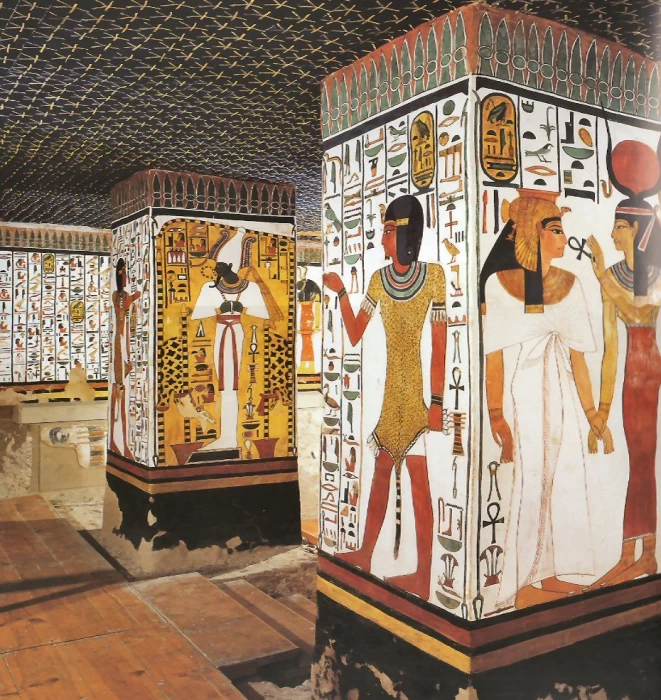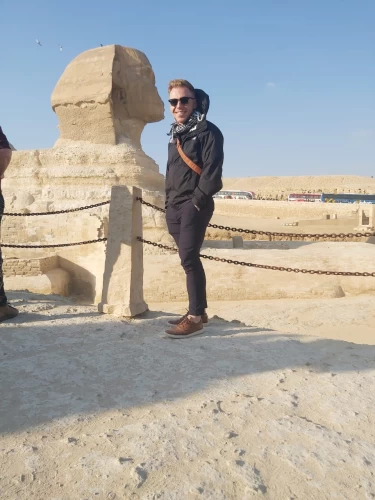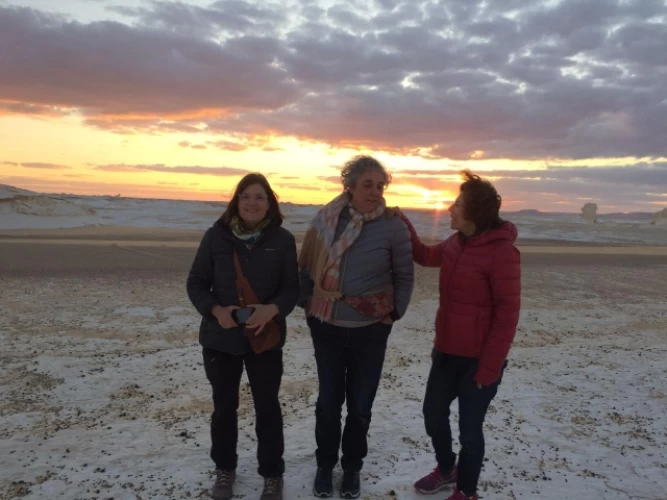
Secrets of Nefertari tomb
Secrets surrounding the Tomb of Nefertari: An Effulgent Work of Art from The Beginning of Civilization
The Valley of the Queens, one of the areas of the ancient Egyptian civilization that boasts of enormous riches, contains the tomb of Nefertari, the spouse of the Pharaoh Rameses II. This splendid burial ground, which is often called the ‘Sistine Chapel of Ancient Egypt,’ is a delight to every person who appreciates hard work, artistry, and beauty present only in the New Kingdom age.
Who Was Nefertari?
Nefertari was far from a dull queen. She was married to Rameses II, who made her his visible wife (the most beloved) and someone who Nefertari played a large part in marriage, diplomacy, and religion. Her namesake, which means “Beautiful Companion,” implies the character's beauty and charm and makes Lady intelligent. She received such a distinction while still alive, which is rare for most, making Nefertari statues to be carved, located at the great temples of Ramses II at Abu Simbel.
The Structural Splendor, which is the Tomb
Marching through the Valley of the Queens, one cannot miss QV66-Nefertari’s tomb. It is the second largest and the most richly decorated of all the tombs in the valley, after that of the actual queen. Covering an area of 500 meters, the tomb is covered in detailed murals that are incredibly well preserved and provide an insight into the spiritual and aesthetic development of ancient civilizations, such as Egypt.
What the Paintings Hold From The Past
Writings, depictions, statues in polystyrene, and history:
Vivid Imagery of the Afterlife: The walls in this section are ornamented with scenes from the Book of death. Nefertari's journey into the underworld. These colorful wall paintings depict her interaction with several gods, among them Osiris, Anubis, and Hathor, who assist her in achieving immortality.
Symbols of Protection: Descriptive ceilings of everything—stars representing the sky and Amy protecting goddesses Isis and Nephthys, who help the deceased pass peacefully on.
Mastery of Color and Technique: The use of vibrant colors, sharp lines, and almost photographic expressions was used by the craftsmen in the amazing narrative of the queen. the minerals-based pigments have faded, wearing bright colors and fresh splendor even after 3000 years.
Mysteries of the Tomb
Nonetheless, the overflowing magnificence of the tomb did not escape being vandalized in early times; thus, no mummy nor riches belonging to Nefertari were ever found. This has raised suspicions as to what might have happened to her coffin and the additional decorum with her in it. All the same, the artistic treasures associated with the tomb make up for these losses and come with a lot of insight into ancient Egyptian customs and religion.
Conservation Initiatives
In recent times, the archaeological remains of the tomb in the section demand a lot of conservation from the respective bodies. The high dampness levels together with the influx of tourists within the area have threatened its preservation, hence the prohibition of its access to the public. Today, a few numbers of visitors are allowed into the area only at specific times so as to ensure that this piece of art is preserved for the coming generations.
A Visit to Nefertari’s Tomb
For those who are so lucky to be there, taking a step inside the tomb of Nefertari is like being in a prehistoric civilization. The brightly colored paintings and the once-a-place spirit almost take one back to the decades of gods’ wives as then known, who sit in depictions of great art. Such is the effect on every tourist who has had a chance to visit this tomb.
To Summarize
Nefertari's tomb, which might look, to an occasional onlooker, like a simple burial ground, is actually an embodiment of artistic expression, love, and celebration of life. Of its many wonders, the well-preserved interior still provokes interest, so it is easy to understand why this place has to be included on the itinerary for anyone who has an interest in ancient Egypt. When one enters this striking edifice, imagination takes one to the time of the gods and their everlasting goddess.
There’s no better time than now to plan your visit to Nefertari’s tomb and enjoy ancient Egypt like never before.
tomb of Nefertari
The history of the establishment of the most beautiful ancient Egyptian tombs in the Luxor Valley of the Queens, Ancient Egypt
Nefertari Tomb, the date on which the most precious ancient Egyptian tombs were founded in the Queens' Luxor Valley, Ancient Egypt. Secrets you have not known before concerning the grave of Queen Nefertari, Ramses II's wife, and the precious information it contains concerning the Pharaoh civilization.
Valley of the Kings in Luxor
With respect to the pharaonic engravings and illustrations, the burial place of the pharaonic queen Nefertari, suffice it to say, is one of the most decorative tombs. In Abu Simbel Temple, King Ramses II's wife, Nefertari, is a queen's figure present with the king's statue.
Nefertari interesting facts: The tomb of Queen Nefertari was discovered in the year 1904. The year 1904.
Following the restructuring and disposal of salt deposits on the cemetery walls in the early 1990s, the cemetery was officially opened.
The cemetery is now fully restored by the Egyptian government and open for visits.
The cemetery has suffered a great deal of damage, particularly in the tomb, with time, climate conditions, and erosion.
The tombs in the Queens Valley are regarded as some of the most beautiful.
Discover the tomb of Queen Nefertari.
Italian archaeologist Ernesto Schiaparelli in 1904 AD.
Inside Map of the Grave of Nefertari:
The journey can be started by a sloping escalator at the cemetery, which leads you to a hall with an arched cornice on two sides. On the right-hand side, there is also a painting of Queen Nefertari adoring Osiris and Anubis, as well as gravures by four Horus children. On the left of the hall, you will find the Queen's companion.
The four Horus children will be drawn above the door, directing you to the second corridor. On the right of the door, besides Proles, we find the deity Nate receiving Queen Nefertari and drawings of the gods on the other side of the frame.
Nefertari tomb discovery
First room: When you leave the first room, you will find salami everywhere with unique drawings and engravings. At the bar, you'll see Queen Nefertari's drawings as she offers her goddess Isis and Naphty a cup of wine and another cup of milk. And other Queen Nefertari drawings show Hathor sitting with a cup of wine. At the end of the drawing, Maat walked behind her and sat behind her.
In addition to the wide pot to add the sarcophagus of the Royal Throne via the staircase, the burial room contains an inscription in the pharaonic way of the Book of Gates.
On the sides of the room, you can see four columns in two lines, inscribing Queen Nefertari with the ancient Egyptian gods and beliefs. The burial room includes 3 additional rooms.
As its walls offer exceptionally beautiful views, the entire ceiling is colored blue to represent the sky, the stars are yellow, and the columns have three colors: black at the bottom, then a red band, while the inscriptions are on a white background, and what distinguishes the cemetery is the intense coherence of the colors and the splendor of the inscriptions.
After finishing your journey, we will enter the burial room at the Queen Nefertari tomb, where you'll find four columns of square size in the middle of a large gap, where you'll find two chambers, one on the right and the other on the left.
In addition to the wide pot to add the sarcophagus of the Royal Throne via the staircase, the burial room contains an inscription in the pharaonic way of the Book of Gates.
On the sides of the room, you can see four columns in two lines, inscribing Queen Nefertari with the ancient Egyptian gods and beliefs. The burial room includes 3 additional rooms.
The importance of Queen Nefertari to King Ramses II
The importance of Queen Nefertari, the most loved wife of King Ramses II, as he used to call him to love expressions such as that she was the person for whom the sun rises.
He built the temple of Hathor so that Queen Nefertari could be worshiped as a god.
He built wall paintings in the Valley of the Queens.
He built statues of the queen in the small and large Abu Simbel temples in appreciation of her.
Latest Articles
Admin
Seabourn Sojourn Cruise Stops in Safaga Port
The Seabourn Sojourn, the flagship vessel of Seabourn Cruise Line's ultra-luxury fleet, was built in 2008 at the T. Mariotti shipyard in Genoa, Italy. Measuring 198 metres, it can accommodate up to 450 guests in its 225 spacious all-suite staterooms.
Admin
Norwegian Sky Cruise Stops in Safaga Port
Norwegian Cruise Line operates a cruise ship called the Norwegian Sky. It was constructed in 1999 and can accommodate 2,004 passengers in addition to 878 crew members. The ship has several dining establishments, lounges and bars, a spa and fitness center, swimming pools, and a number of entertainment areas.
Admin
Explora II Cruise Stops in Safaga Port
Explora II, the second vessel in the Explora Journeys fleet, sets sail in 2024 to redefine luxury cruising. With 461 ocean-front suites, 9 culinary experiences, and 4 pools, this haven of sophistication and sustainability promises an unforgettable "Ocean State of Mind" journey to inspiring destinations.
Admin
Mein Schiff 6 Cruise Stops in Safaga Port
The Mein Schiff 6 is the latest cruise ship in the renowned TUI Cruises fleet, offering passengers a luxurious and sophisticated cruise experience. At 315 metres long, this floating resort features a range of dining options, entertainment, and recreational facilities, including a spa, fitness centre, and sports amenities.
Admin
Mein Schiff 4 Cruise Stops in Safaga Port
When the Mein Schiff 4 cruise ship docks in Safaga, Egypt, passengers are granted access to a realm of ancient wonders. Aboard this state-of-the-art vessel, guests can embark on meticulously curated shore excursions that showcase the region's most iconic landmarks, including the Giza Pyramids, the enigmatic Sphinx, and the remarkable tombs and temples of the Valley of the Kings in Luxor.
Admin
MS Europa Cruise Stops in Safaga Port
The Silver Moon, Silversea's latest flagship, is a luxury cruise ship that offers an exceptional travel experience for Venezuelans exploring Egypt. With a capacity of 596 guests and an impressive 40,700 gross tonnes, the Silver Moon maintains the small-ship intimacy and spacious all-suite accommodations that are the hallmarks of the Silversea brand.















